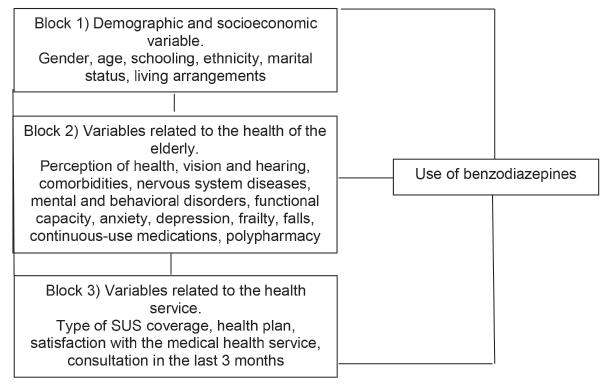Abstract
Objective:
to assess the prevalence of and factors associated with the use of benzodiazepines in elderly persons living in the community.
Method:
a cross-sectional study was conducted through a household survey of 423 elderly persons from Juiz de Fora, Minas Gerais, Brazil. To analyze the factors associated with the outcome, the Poisson regression model was used, based on the theoretical model of determination with hierarchical blocks. The variables were adjusted within each block, with those with a 5% significance level remaining in the final model.
Result:
The prevalence of benzodiazepine use was 18.3% (95% CI 15.2 to 21.6). Most benzodiazepines used had a long-elimination half-life (59.2%) and use was considered long in 85.5% of users. Among benzodiazepine users 38.4% also used antidepressants. The use of these drugs was associated with the presence of self-reported mental and behavioral disorders, polypharmacy and medical visits in the last three months.
Conclusion:
The use of benzodiazepines was considered high among the elderly. The reduction in the prescription of these drugs should be assessed individually, considering the physiological alterations of the elderly and the adverse effects of drugs, in order to minimize incorrect prescriptions.
Keywords:
Aging; Health of the Elderly; Cross-Sectional Studies; Benzodiazepines

